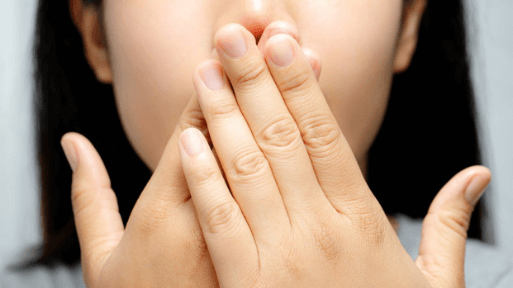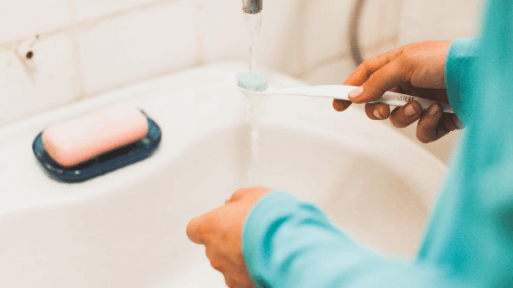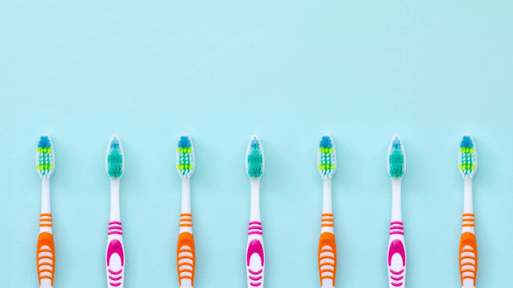What Your Tongue Can Tell You About Your Health

Your tongue is an amazing thing. Not only does it allow you to taste delicious foods, it also helps you create suction for a straw and starts the act of swallowing. Did you know your tongue can also tell you about your health?
- White coating – If you notice parts of your tongue appear white, this may be oral thrush. It’s a yeast overgrowth that can cause further health complications if not treated. However, if you brush your tongue and the white goes away, you’re good to go. Speaking of which, when’s the last time you brushed your tongue?
- White patches – These could be leukoplakia, caused by irritation from tobacco or alcohol use. Leukoplakia is a mucous membrane that can’t be scraped off. It can disappear over time if tobacco and alcohol use are stopped.
What Causes Bad Breath?

If you have bad breath and it wasn’t caused by something you recently ate, it could be a sign that you have gum disease, tooth decay or an underlying medical issue. Bad breath, otherwise known as halitosis, can be embarrassing—but it’s important to figure out its root cause and remedy the issue.
The most common reason for bad breath? Poor oral hygiene. If you don’t keep your teeth and gums clean, decay and debris in your mouth can produce unpleasant odors. If you brush twice a day and floss daily and still have bad breath, schedule an appointment with your dentist. They’ll help identify the cause.
Gum disease (aka periodontitis) also causes bad breath. Bad breath is just one of the symptoms. Other signs you may have gum disease include swollen gums and bleeding. Left untreated, gum disease can wreak havoc on your health causing all sorts of dental problems and tooth loss.
5 Tricks for a Better Brushing Routine

Do you have trouble brushing your teeth twice a day? You’re not alone.
Set a Reminder
While your phone is a fun place to unwind with viral videos and internet surfing, it’s also a great tool for creating a routine. Set a reminder to alert you twice a day to brush your teeth—once when you wake up and another just before you turn in for the night.
Choose a Theme Song
Pick a fun song to brush your teeth to and you’ll be dancing right into a new brushing routine.
Create a Smile Diary
Want to see how your teeth get healthier over time? Snap a photo every day after you brush in the morning and review the photos every 30 days. This can help motivate you and create fun content to share on your social media channels.
How Often Should You Replace Your Toothbrush?

Your toothbrush does a lot of work. It reaches into the nooks and crannies of your mouth to help clean out food, bacteria, and other gunk. Over time, your toothbrush takes a beating. How often should you swap your old one out for a new one?
You Should Replace Your Toothbrush Every…
Over the months, your toothbrush bristles fray, losing their ability to properly clean. If you’re like most people, you only change out your toothbrush when you visit the dentist twice a year. But the truth is you should be swapping out your toothbrush much more often.
The most common recommendation for changing out your toothbrush is every two to four months. If you’re uncertain of whether it’s time to change, keep this phrase in mind: When in doubt, change it out.
3 Benefits of Fillings You May Not Know

Getting a filling is a common dental procedure that involves removing decayed or damaged portions of a tooth. The space is then filled with a material that guards against additional damage. But fillings do more than just treat cavities. Here are three benefits of fillings you may not know about.
Fillings Do More Than Just Treat Cavities
Fillings can also strengthen teeth with a weakened structure. Also, if you’re getting dental work that requires several visits, a temporary filling can give your tooth and gums time to heal. This in turn ensures the tooth doesn’t become infected between appointments.
Bonus: Some fillings even release fluoride to provide additional safeguards against damage and decay.
How to Choose the Best Floss for Your Teeth

Flossing plays a major role in your oral health. But how do you know which floss is best for you? Let’s take a look.
What are the Types of Floss?
There are four kinds of floss: woven floss, shred-resistant floss, unwaxed floss, and electric flossers. While you may prefer one over the others, is there really a difference between the four types of floss?
In terms of plaque removal, a study published in the Journal of Periodontology suggests the answer is no. 25 people were given the different types of floss and the evidence suggests they’re equally effective at removing plaque—though the electric flosser showed the greatest plaque removal upon first use.
Is Cheese Good for Your Teeth?

Cheese lovers rejoice: Your favorite food is actually good for your smile. But how could a tasty food have such positive effects? Let’s take a bite out of some cheese-filled dental facts.
Cheese is a Low-Carb Option
Watching your carbohydrate intake? Reach for a slice of cheese at snack time. Besides having properties that are beneficial to your teeth, cheese is high in protein to keep you feeling full for longer. Choosing cheese as a dessert or eating it as an appetizer, snack or in addition to foods that could be potentially harmful to your teeth is a great way to ward off bacteria.
Did you know casein is the name of the protein found in cheese? In addition to helping with muscle growth, it also coats your teeth with a protective film. Acids that would normally attach to your tooth enamel don’t stand a chance!
Does Chewing Gum After a Meal Prevent Cavities?

What’s better than a minty stick of gum after a meal? After all, it freshens your breath and helps prevent cavities. Or does it?
What Studies Say
Gum chewers, rejoice: We have good news about post-meal gum (as long as you opt for the sugar-free kind).
Studies have shown that chewing sugar-free gum for twenty minutes after eating increases saliva production. Saliva in turn helps lower the risk for cavities and dental erosion; the act of chewing presses saliva into hard-to-reach areas, washing away plaque and bacteria.
How about that? Chewing gum can actually be a part of healthy oral hygiene.
How Long Should You Wear Your Retainer?

Your Invisalign® or SureSmile® clear aligner treatment is finished. Now what? To keep your smile looking sharp, you’ll need to wear a retainer. But for how long? Let’s dive into the timeframe and reasoning behind it.
What are Retainers For?
Clear aligners did the tough work of moving your teeth into the proper position. However, if teeth are not supported and guided to where they should stay, they tend to shift back to their old position over time. This is where retainers save the day—and your smile! By wearing a retainer, your teeth will stay in their designated positions, keeping your smile exactly the way you want it.
5 Common Misconceptions About Children’s Teeth

We all want our kids to grow up with strong and healthy teeth. Staying informed is crucial in making that wish a reality—especially when it comes to debunking myths. Here are five common misconceptions about children’s teeth to help you become a more informed parent.
Baby Teeth Don’t Matter
Just because baby teeth eventually fall out doesn’t mean they aren’t important. Kids usually have about twenty baby teeth by the age of three. They help the mouth hold enough space for adult teeth, help the jaw develop correctly, and make sure adult teeth align properly.
Preschool-Aged Children are Always Scared of the Dentist
This doesn’t have to be the case. By taking your child early and often, they’ll form a friendship with the staff and a familiarity with the sights and sounds of a dentist’s office.
3 Myths About Root Canals

A root canal is a procedure where you dentist cleans out the decay in your tooth’s pulp and root. Unfortunately, root canals have a bad rap in popular culture. But much of the negativity surrounding them is based on myth. Let’s dispel three of those myths today.
Root Canals Hurt – FALSE
This myth has its roots (no pun intended) from decades ago when dental procedures were painful. With today’s modern technology and better anesthetics, root canals are basically pain-free. In fact, they’re no more painful than having a filling.

